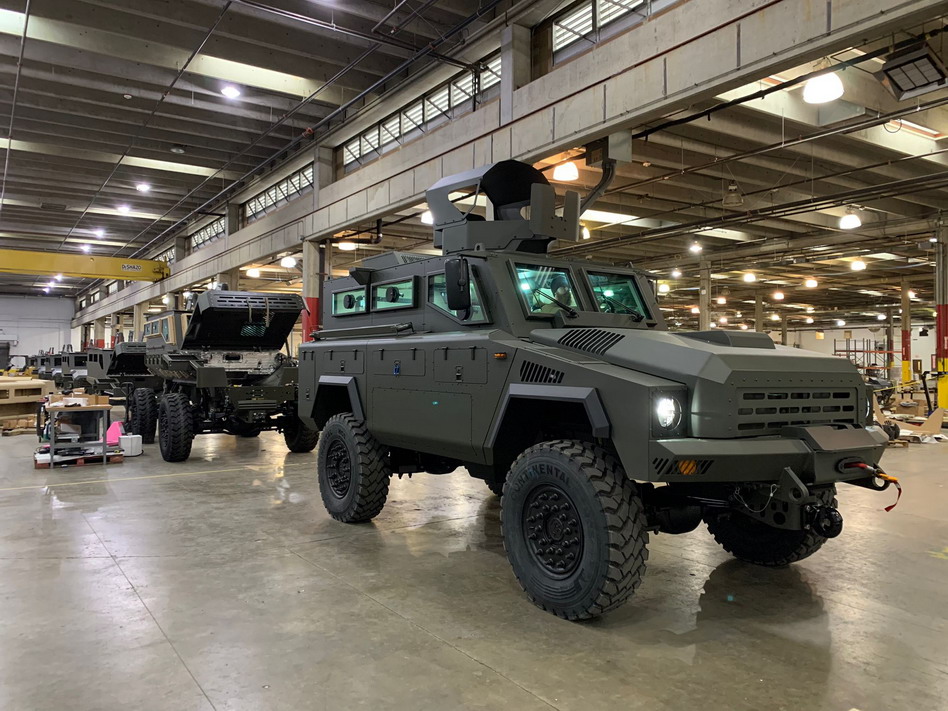
08 Dec Osprea Mambas for Africa
Osprea Logistics is successfully delivering another 50 Mamba armoured vehicles to an African based customer, who will use them for peacekeeping missions.
United States-based Osprea Logistics has supplied Mamba mine-resistant, ambush-protected (MRAP) vehicles to customers across Africa over the years, and is now concluding the supply of more than 50 Mamba Mk 7 MRAPs, comprising Mk 7s, Mk 7-Xs, and 6×6 Armoured Wreckers.
Based on the South African designed Mamba, the Mamba Mk 7 has since 2016 been solely manufactured in the United States by Osprea Logistics and features multiple improvements over previous Mamba generations. The company said it has supplied hundreds of Mambas around the world and these have survived multiple improvised explosive device (IED) strikes of 50 kg, 80 kg and greater. No fatalities have been recorded after multiple IED hits in Somalia, Mali and Niger.
The Mamba has fast become the peacekeeping operations, counter-terrorism and counter-insurgency vehicle of choice for the US Government and other organisations and governments because of its simplicity, functionality and price point, Osprea said, offering a NATO level armoured personnel carrier at a fraction of the price.
Kenya and Uganda have both operated Mambas in Somalia under the AMISOM peacekeeping mission along with all other Troop Contributing Countries to AMISOM: in 2020, 22 Mk 7s were supplied to Kenya while Uganda received 23 in 2020, according to the Stockholm International Peace Research Institute (SIPRI).

In August 2020 Osprea delivered 47 Mamba Mk 7s to Niger to equip the G5 Sahel Joint Force for its fight against terrorism, transnational organized crime, and trafficking in the Sahel. These were donated by the United States, which also supplied 13 Osprea Mambas in December 2019, also for the G5 Sahel Joint Force.
Togo is a large African customer, having ordered over 100 Mamba Mk 7s, according to SIPRI data. These were first displayed during an April 2021 parade.
The nearly 15 ton Mamba Mk 7 is certified to STANAG Level 4A and 4B blast protection, with all-round ballistic protection greater than B7 (7.62×54 mm API and .50 calibre), although they have survived mine blasts in excess of twice Stanag 4A4B level. Additional armour can be fitted along with optional PRG protection. A six cylinder turbocharged diesel engine gives a top speed of 105 km/h and a range of 800 km.
The upscaled Mk7-X with a 410 hp engine and independent suspension has been supplied to at least two major countries’ Special Forces.
Osprea highlights the Mamba Mk 7’s enhanced situational awareness through five large rear windows and a sloping bonnet along with four roof hatches, and excellent manoeuvrability through its industry-leading turning circle. An optional manual or electrically driven turret can support a weapon up to 12.7 mm calibre. Any of the windows can be fitted with gun ports to allow engagement from within the vehicle.
The Mamba Mk 7 is available in different variants, including troop carrier, command and control vehicle, ambulance, emergency recovery vehicle, and IED interrogator arm vehicle (additional options add ground penetrating radar).
In addition to supplying complete vehicles, Osprea Logistics allows local manufacture through either complete or semi-knock down kits. Its fully industrialised assembly process enables the vehicle to be manufactured in the client’s country. This is backed by full training support and the supply of spares and maintenance.
Credit to Defence Web

